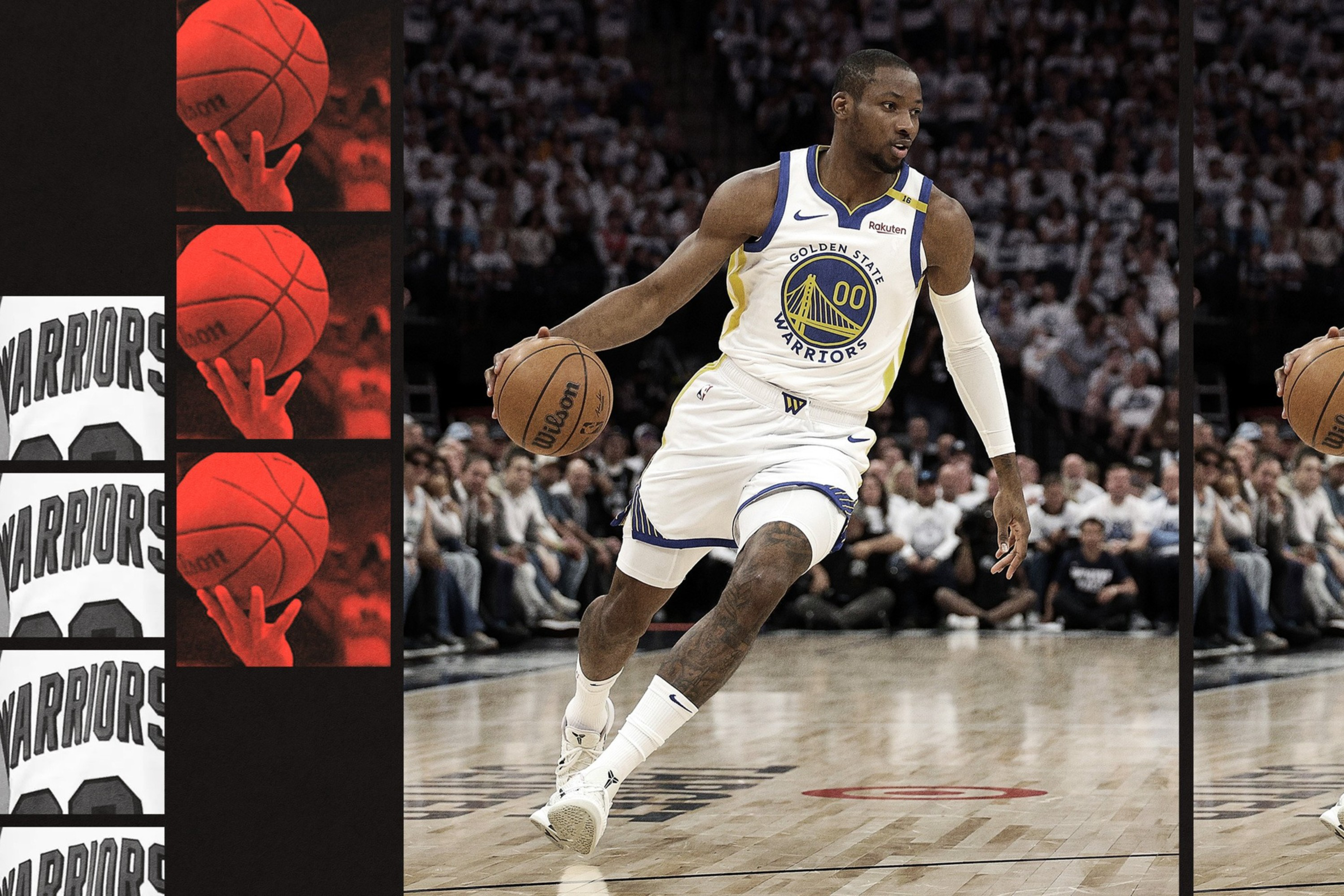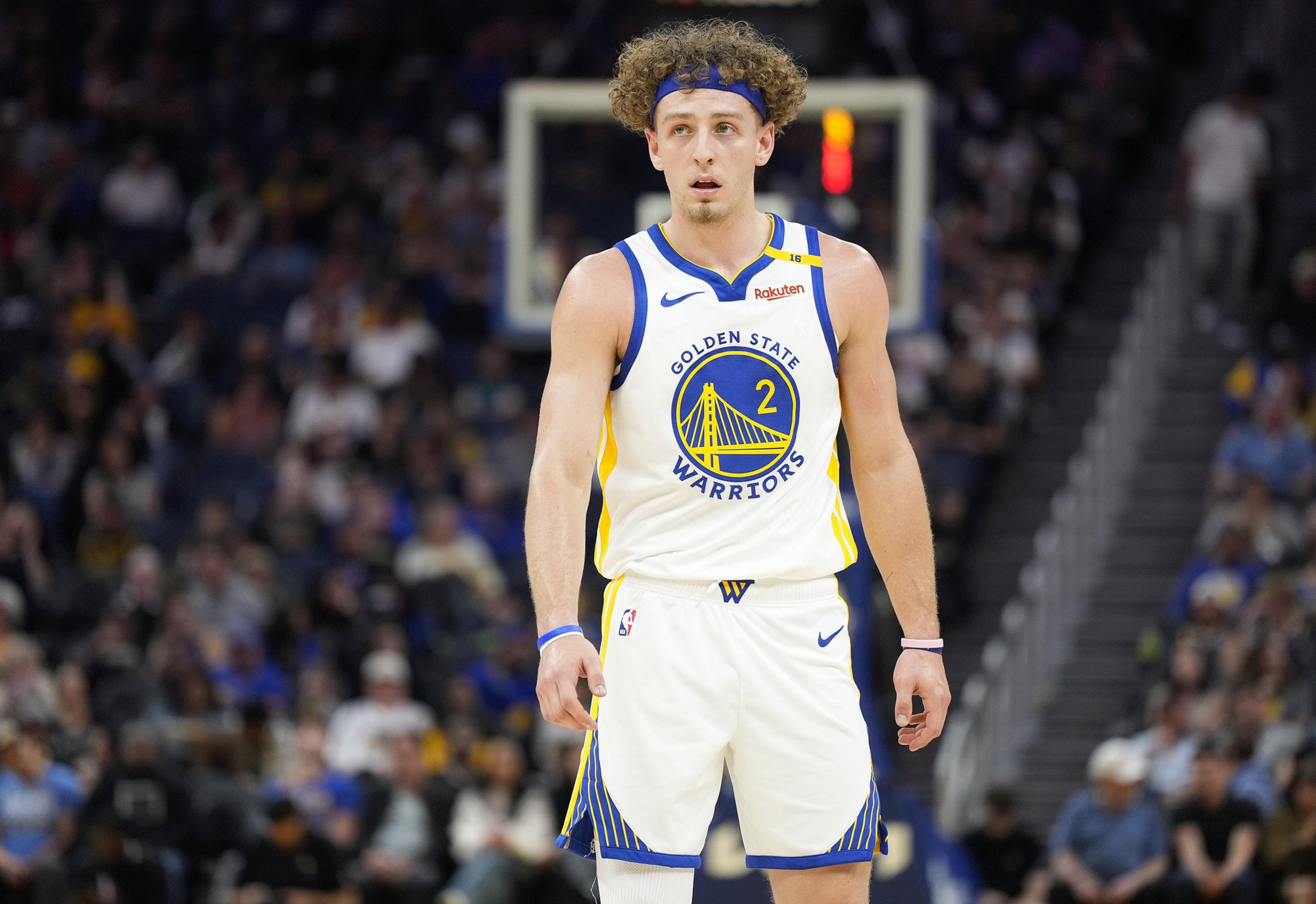Moses Moody made a whole lot of sense talking about his new, three-year, $39-million contract extension on Monday — no surprise, because he’s one of the most sensible people I’ve ever been around.
Steve Kerr made a lot of sense, too, explaining why the Warriors agreed to this deal even though the 22-year-old Moody hasn’t yet won a full rotation spot heading into Wednesday’s regular-season opener in Portland.
“We obviously want to invest in people,” Kerr said. “Ultimately, you’re investing in who you believe in. And Moses, he’s that person.”
The whole Moody thing just made sense, though it occurred in an NBA negotiating situation that often leads to rushed or nonsensical decisions. Usually in these rookie-extension talks, the two sides either agree (and pray) that the player has max or near-max value — or there’s no deal and things can get a little problematic.
For instance, Jonathan Kuminga, Moody’s 2021 draft classmate, understandably believes he’s a max-level talent, but the Warriors haven’t seen enough from him to commit that kind of money. So Kuminga will play this out and hit restricted free agency next summer.
The Moody deal, though, was a calm, middle-range compromise even though it may take another season for Moody to be a full-rotation guy. The Warriors retain his value, and possibly can trade him next summer, probably with Moody’s blessing, if he doesn’t earn regular minutes. In return, Moody gets financial security and will remain patient with the process.
“The season will go how it goes,” said Moody on Monday, emphasizing how much he enjoys playing for this team, alongside Stephen Curry and Draymond Green, and how good it feels to be respected by those he respects the most.
So sensible! This is what struck me as I was drawing up my general conclusions about this Warriors season. Yes, I’ll say it: They’re set up for their sanest, least-emergency-riddled campaign in at least half a decade. That doesn’t mean it’ll be the best season since the Kevin Durant days. I’m just saying it could be the calmest year since their worries about KD’s wandering eye in 2019 started messing with the Warriors’ nervous system.
Section 415: Ballers manager Aaron Miles on bringing a title back to Oakland

Section 415: Cricket is on the rise in the U.S., and the Bay Area is a hotbed

Section 415: Steph Curry, Jonathan Kuminga, and a Warriors season preview

Just go back through the years that followed the Warriors’ back-to-back titles in 2017 and 2018 and you’ll get my point about the relative serenity leading into this season:
- 2018-19: Durant’s final Warriors season, which is full of turmoil about his intentions.
- 2019-20: Durant and others depart, the Warriors reset their roster, Curry gets hurt, the pandemic hits, and the overall result is the worst record in the league.
- 2020-21: The Warriors try to force No. 2 overall pick James Wiseman into the lineup and it really, really doesn’t work.
- 2021-22: A year of blissful nonsense for the Warriors, who start 18-2 basically out of nowhere and race to the championship. It was great for the franchise, but it sure wasn’t calm.
- 2022-23: Draymond punches Jordan Poole in training camp, essentially ending any chance of post-title peace and tranquility. Later, Andrew Wiggins’ personal family issue keep him away from the team for months.
- 2023-24: Draymond is suspended twice for unsportsmanlike acts, Klay Thompson gave off repeated signals that his time with the team might be nearing an end, and the Warriors grieved the tragic death of assistant coach Dejan Milojević.
Something staggering and emotionally fraught could happen this season, too. But I think the Warriors are due for a more normal journey and, as the Moody deal illustrates, they’ve assembled the right people for it.
There definitely is urgency to go on one more title run in Curry’s prime, of course. There will be some tension while Kuminga tries to expand his game and reputation, no doubt. And Kerr has a lot of decisions to make about this deep roster full of interesting role players. But all of that is typical NBA stuff. The Warriors have dealt with a lot of atypical stuff lately, and everybody is ready for that streak to end.
It’s why I think they can add a few more to the 46 games they won last season, and possibly move up to the sixth or seventh seed in the loaded Western Conference. Here are some more specific reasons why this could be a very stable and slightly more successful season:
Their cap situation is getting straightened out
Over his two seasons running the team, general manager Mike Dunleavy Jr. has put together a much more cohesive roster while reducing the payroll and getting the team out of the punishing second apron. It started with trading Poole for a one-year look at Chris Paul and drafting Brandin Podziemski and Trayce Jackson-Davis. It continued this off-season through the additions of De’Anthony Melton, Kyle Anderson and Buddy Hield in the salary slots left by the departures of Klay Thompson and CP3.
Is this a championship-level roster? Probably not. But it’s sturdier than the one that got to 46 wins last season; it’s not out of line to think the Warriors could get close to 50 this time around.

Some salary-cap stuff: Adding in Moody’s $12 million salary next season, the Warriors now have committed about $147 million to eight players for 2025-26. Which doesn’t include Kuminga. The projected salary cap for next season is $154.6 million. The projected tax line: about $188 million.
This means that the Warriors have created some financial maneuverability for the first time in years. They actually started trying to use it last summer, when they failed to acquire Paul George and then Lauri Markkanen. They will keep trying. They can see what Kuminga will get them on the trade market in February, or again next July. They’ve got future draft picks they can trade. They can check on Moody’s value. Many teams were interested in Podziemski last summer.
So if there’s a star available at the trade deadline who could make the Warriors an immediate title contender, well, they will have some ways to try to pull that off.
They can be much, much better at home
This might’ve been the wackiest stat of last season and I don’t think it’ll be repeated: The Warriors were just 21-20 at Chase Center (tied for 18th-best home record in the league) and were 25-16 on the road (tied for sixth-best). That mediocre home record is really what got the Warriors locked into the 10th slot in the West, which led to the play-in stomping in Sacramento.
In their 2021-22 title season, the Warriors actually had a worse road record (22-19) than they did last year but got to the West’s third seed because of their 31-10 home mark.
They probably can’t get to 31 home wins this season, but a reasonable bump up to 27 Chase Center wins could get the Warriors into pretty solid territory.
Depth and defense will carry them through tough stretches
As Kerr pointed out on Monday, the Warriors are 12 deep going into Wednesday and it’s not easy trying to figure out how to whittle that down to a sold nine- or 10-man rotation every night.
“Keep going,” Kerr said, after asking me to name the Warriors’ expanded rotation. “I want you guys to know the game I play in my head every day. … That leaves 12. So we have a great problem on our hands. We have an incredibly deep team. But just do me a favor, when you write after Wednesday night, … or you ask me after the game why I didn’t play so-and-so, please tell me who I should’ve taken out of the rotation, and then I’ll have more clarity.”

Things always settle themselves during the season. There will be injuries. Curry and Draymond will get rest nights. Role players will rise and fall. But, especially with Podziemski’s development and with Melton and Anderson, the Warriors have respectable ways to fill in for Curry and Draymond. Remember, Curry played 74 games last season, his highest total since 2016-17. In 2021-22 and 2022-23, Curry averaged 60 games. That’s probably a solid baseline for this season — 60 games of Curry in a campaign when he turns 37, a few months after he practiced and played all the way through the Olympics.
The additions of Anderson and Melton specifically should lead to much better defensive minutes for the Warriors, who struggled to defend the wings last season. No question, Klay is an eternal Warrior and shot it well last season, but the Warriors had a 118.9 defensive rating (similar to what the lousy Trail Blazers put up last year) when Klay was on the court in 2023-24. That dropped to 111.4 (just a little better than what the Celtics put up all season) when he was out of the game.
There’s a path to the 6th or 7th seed
In a micro-standings view, the Warriors went 1-3 against the Clippers last season. But now George is a 76er and Kawhi Leonard is out indefinitely with more knee issues. If the Warriors just flip that to 3-1 this season … there’s two more wins, just like that.
On the macro level, I can see the Warriors also picking up ground on the Lakers and Pelicans (the seventh and eighth seeds last season, respectively). They’ll have to fend off rising teams like Houston, Memphis, and San Antonio, but I think the Warriors are decently equipped to at least hold their own with that group.
Season prediction: 48-34, seventh seed in the West.
